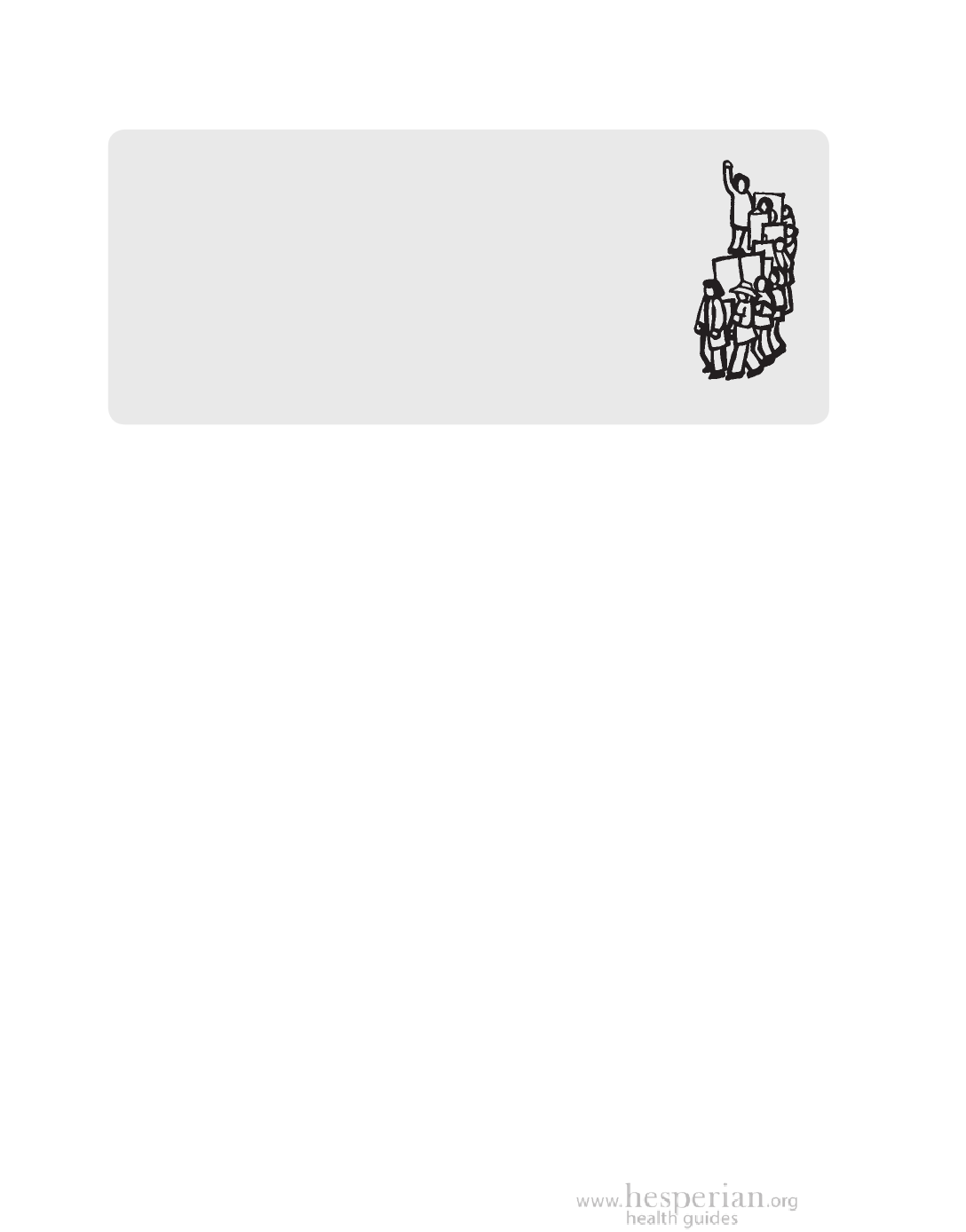
5 62 A ppen d ix b: Usi n g L aw s to Fi g h t f o r En v i r o n m en tal R i g h t s
(continued from previous page)
The people of Junín had learned to use the law to their advantage.
After the company claimed it had done the EIA, the government
rejected it as incomplete.
People in Junín also used direct actions, such as refusing to
let the company enter the area by blocking roads. Community
leaders declared the entire municipality a non-mining
zone. By using a variety of tactics, the people of Junín have
prevented this open-pit copper mine from destroying their
homes, their rich forests, and their water sources.
Community-based EIAs
A community-based EIA can help people in a village, town, or region come
to a common understanding of the ways they use, protect, and depend on
resources such as air, food, water, animals, forest products, plant medicines,
sacred places, and so on. This can create a process for resolving conflicts
and misunderstandings within communities about the use of resources. This
can belp build the unity needed to challenge corporations or governments. It
can also help mobilize people to oppose industries which take advantage of
divisions among people to exploit their water, timber, land, or other resources.
A community-based EIA can be as simple as discussing what resources
the community uses and coming to agreements about how to best protect
them from exploitation. A more complicated community-based EIA can
include making detailed maps, conducting surveys, and building alliances
with neighboring communities and supportive organizations.
A community-based EIA is different from an EIA carried out by
corporations or governments. It may not meet the legal requirements of an
“official” EIA, because it puts more importance on what communities think
and the health of people and their culture than on exploiting resources. A
community-based EIA recognizes that the difficult to understand structure
and “scientific” language required in EIAs is not only confusing to most
people, but purposely designed to exclude them. A community-based EIA is a
way of saying “Another way to assess environmental impact is possible.”
Many of the activities throughout this book, such as mapping (page 15),
sociodramas (page 18), health surveys (see page 500), watershed protection
activities (page 164), trash walks (page 391), or other activities developed by
your community can contribute to a community-based EIA.
A Community Guide to Environmental Health 2012